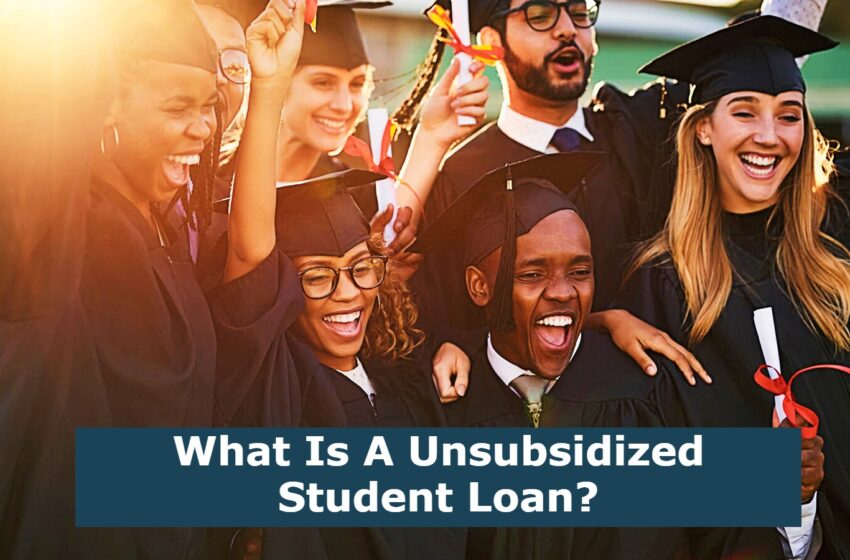
What Is A Unsubsidized Student Loan?
There are several reasons why you might want to consider applying for an unsubsidized student loan. For starters, it’s often cheaper than a subsidized loan and you won’t have to pay interest while you’re in school. In addition, you may be eligible for income-driven repayment plans or Public Service Loan Forgiveness.
Subsidized vs unsubsidized loans
Subsidized and unsubsidized student loans are two types of financing options available for college students. They have a number of similarities and differences. It’s important to understand them to make the best decision.
A subsidized loan is a federal student loan with a lower interest rate. It can help students manage their debt after graduation. However, it may not cover all of the costs of college. Unsubsidized loans, on the other hand, can be used for graduate school and other programs.
Generally, subsidized loans are awarded to undergraduates. Whether or not you qualify for subsidized loans depends on your financial need and your school’s budget. The government’s Free Application for Student Aid (FAFSA) will help you determine the amount you can borrow.
You can borrow up to $34,500 per year in an undergraduate degree program. If you are a graduate student, you can borrow up to $20,500.
They don’t require financial need
When it comes to student financing, there are two types of loans. One type is a need based loan that has its own set of stipulations. The other is a non-need based loan that is open to all eligible borrowers. Both kinds of loans can help pay for college, but they do have their differences. Unsubsidized loans are the latter, and you are responsible for paying the interest on your loan.
Among the many forms of government sponsored financial aid, there are two types of loans: subsidized and unsubsidized. Subsidized loans are available to all qualified undergraduate students, and require that you be enrolled at least half-time to qualify for a loan. While the subsidized is a need based loan, the unsubsidized is a merit based loan, which means that the school determines how much you qualify for based on your application.
They’re cheaper than subsidized loans
When looking for a loan to pay for your college education, you may want to consider subsidized loans or unsubsidized loans. These two types of federal loans are designed for different purposes and have differing borrowing limits.
Subsidized loans are designed for students who have financial need and have been determined to be eligible. The interest rate is lower on subsidized loans, which can save you thousands of dollars in interest.
Unsubsidized loans are not based on need and have higher borrowing limits than subsidized loans. Students can borrow more money on an unsubsidized loan, but they are responsible for paying back the interest.
When you borrow subsidized loans, the interest is paid for you by the government. There are different repayment plans for subsidized loans, which can help you minimize the total amount you owe on your student loans.
They’re eligible for income-driven repayment plans or Public Service Loan Forgiveness
Public Service Loan Forgiveness (PSLF) is a federal program that provides debt forgiveness for some student loans. To qualify, borrowers must make qualifying payments for a set period of time while working for a public service organization.
There are several different repayment plans available, including the 10 year Standard Plan and the Extended Repayment Plan. Each plan has its own features and benefits. Choosing the right plan for your financial situation can help you pay off your student loan faster and save you money in the long run.
The Department of Education has announced some changes to the program. These changes will take effect in 2022. If you’re considering applying for PSLF, it’s wise to check out the new requirements. You should also be aware that the program isn’t for everyone. It’s best suited for those who are engaged in public service careers.
They’re not paying interest while a student is in school
Unsubsidized loans are federal loans that do not add interest to the principal loan amount while the student is in school. These types of loans are typically cheaper than subsidized loans. However, they also carry higher borrowing costs. So, it may be better to get subsidized loans.
Unsubsidized loans do not require that students demonstrate financial need. But interest on the loan continues to accrue, resulting in larger monthly payments. To find out whether you qualify, fill out the FAFSA form.
Unsubsidized loans are available to both undergraduate and graduate students. There are a variety of borrowing limits that depend on the type of degree and student’s dependency status.
The maximum loan amount is determined by the FAFSA. It is calculated by subtracting the cost of attendance from the expected family contribution.


